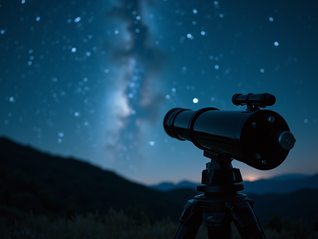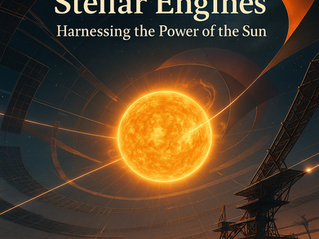Quantum Entanglement: A Conundrum of Nature
- Phystroid

- Feb 18, 2023
- 3 min read
Updated: Feb 28, 2023


Firstly, let me begin by discussing what quantum entanglement is. Simply put, it is a phenomenon where two particles become intertwined in such a way that the state of one particle can instantaneously affect the state of the other, even if they are separated by great distances. This phenomenon was first predicted by Boris Podolsky, Nathan Rosen, and Albert Einstein, in a paper published in 1935.
However, as is often the case with groundbreaking scientific discoveries, the implications of quantum entanglement are not fully understood, and many questions remain unanswered. One of the most significant issues that have arisen is the question of determinism in the universe.
According to classical physics, the universe is deterministic, meaning that the future state of any system can be predicted with complete accuracy if the present state is known. However, quantum mechanics has challenged this idea, with the introduction of probabilistic outcomes for subatomic particles. This is where the issue of free will arises.
In practice, scientists can use a variety of techniques to measure the states of entangled particles, depending on the specific properties that are entangled. For example, in the case of entangled photons with polarizations that are anti-correlated, scientists can use a series of polarizing filters and detectors to measure the polarization of each photon and compare the results. The exact details of the measurement techniques can be complex and depend on the specific properties that are entangled, but the key point is that the act of measuring one particle has an instantaneous effect on the state of the other particle, even if they are far apart.
However, the exact nature of how the state of the second particle changes is not predetermined, and it will depend on the specific type of entanglement and the measurement performed on the first particle. In some cases, the spin or polarization of the second particle will become opposite to that of the first particle after measurement, while in other cases, it may become the same as the first particle's state. The specific outcome can only be predicted probabilistically based on the entangled system's state and the measurement performed on the first particle.
Alain Aspect, John Clauser, and Anton Zeilinger were awarded the prize for their groundbreaking experiments using entangled quantum states, which established the violation of Bell inequalities and helped pioneer quantum information science. Their work has helped to clear the way for new technologies based on quantum information, including quantum computers, quantum networks, and secure quantum encrypted communication. By demonstrating the violation of Bell's inequality, they claimed to have disproven the idea of hidden variables and reinforced the non-locality of entangled states.
However some scientists have proposed deterministic explanations of the experimental data that do not require the existence of non-local correlations or the violation of Bell's inequality. These models usually involve the use of hidden variables that are not accounted for in the standard interpretation of quantum mechanics. For example, one model proposes that the particles in the experiment have properties that are predetermined before they are measured, while another suggests that the measurement apparatus itself may be affecting the results.
Bell's inequality, which is widely accepted as the benchmark for testing entanglement, is based on the assumption that the observer has free will. However as the famous Nobel prize winning physicist Gerard 't Hooft and Einstein himself have argued, this assumption is incorrect. It is also our view that free will is an illusion, and that the universe is ultimately deterministic. As such, Bell's inequality is flawed.
We believe that the phenomenon of entanglement is not a violation of causality, as some have suggested, but rather a consequence of a deeper, yet-to-be-understood deterministic theory of the universe. It is our belief that the universe operates in a way that is consistent with our current understanding of causality, and that the apparent non-locality of entanglement can be explained by a yet-to-be-discovered theory.
However, there are still many questions to be answered about the experiments that can disprove entanglement. The basic problem is that entanglement collapses once a measurement has been done, therefore one has to enter into huge complications arising from the interpretation of the indirect evidence. If indeed nature would allow for non-locality to exist why wouldn't large scale objects behave also non-locally? Why would the act of measurement need to affect entanglement? Observational evidence are really strong only when they involve a direct measurement, and even in these cases it is still possible in some cases to make a measurement error.
The idea of instant communication between entangled particles seems to defy the principles of relativity, as information can't travel faster than the speed of light. Additionally, the idea that the act of measuring one particle can instantaneously determine the state of the other seems to challenge our basic notions of causality. Therefore, one should try to think hard before creating a scientific theory or an interpretation that would go against every possible way of reasonable thinking.
References:
https://www.google.com/url?sa=t&source=web&rct=j&url=https://cds.cern.ch/record/405662/files/PhysRev












































































































Comments